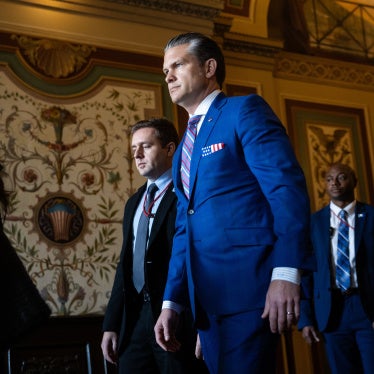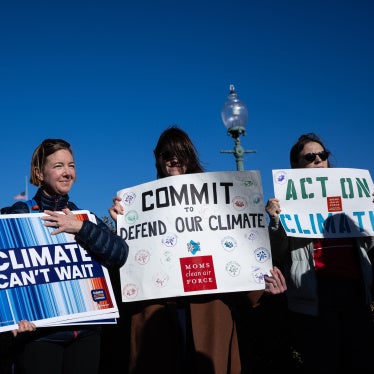- that the substance involved in the case was intended for human consumption
- that the substance is a “controlled substance analogue,” which in turn requires proof of the following “prongs”
- it has a substantially similar chemical structure as a Schedule I or II controlled substance – in this case fentanyl; and b. it either (i) has a substantially similar effect on the central nervous system (i.e., psychoactive effect) as a Schedule I or II controlled substance – in this case fentanyl – or (ii) in a particular case, was intended or represented as having such an effect. All of these elements must be proven to a jury beyond a reasonable doubt.[16]
|
Letter
Coalition Opposes S.1622 Stopping Overdoses of Fentanyl Analogues Act (SOFA)
7/1/19
Lindsey Graham, Chairman
Diane Feinstein, Ranking Member
Senate Judiciary Committee
224 Dirksen Senate Office Building
Washington, DC 20510
Dear Chairman Graham and Ranking Member Feinstein:
The undersigned organizations write to oppose S.1622 - Stopping Overdoses of Fentanyl Analogues Act (SOFA)[1] because we believe this legislation is deeply flawed. Rather than focusing resources on reducing overdose deaths from synthetic drugs, the bill would grant the Drug Enforcement Administration (DEA) broad authority within the scheduling process, increase sentences, and expose many more individuals to harsh penalties, including mandatory minimum sentences. S.1622’s approach contradicts this Committee’s recent work to advance criminal justice reform and public health approaches to the overdose crisis. We urge you to oppose this legislation.
The U.S. is in the midst of a deadly overdose crisis that has claimed thousands of lives each year. In the past few years, synthetic drugs such as fentanyl and their analogues have been responsible for overdose deaths in many parts of the country.[2] In the East Coast and Midwest, use of fentanyl and its variants has been especially dominant with users overdosing after heroin is mixed with fentanyl.[3]
In February 2018, the DEA – in conjunction with the Department of Health and Human Services (HHS)– used its emergency scheduling authority to include a list of specific fentanyl-related substances in Schedule I.[4] This “class-wide” emergency ban, effectively placed any substances similar to fentanyl —in existence or not—in Schedule I. The “class-wide” ban means that any substance produced in the future deemed by the DEA (either prior to or after interdiction) similar to fentanyl would be included in Schedule I. In early 2020, this emergency authority runs out. DEA has not asked the relevant public health agencies, HHS and Food and Drug Administration (FDA), to determine if their scheduling action is medically and scientifically valid, so they are ineligible for a one-year extension to this timeline. As a result, the DEA has requested that Congress pass legislation, the Stopping Overdoses of Fentanyl Analogues Act, to give the agency broad “class-wide” powers to schedule all fentanyl’s, circumventing essential coordination with HHS (as is currently required under the Controlled Substances Act).[5]
Giving the DEA such sweeping powers, via legislation like SOFA, has grave implications for the criminal justice system.[6] If granted this authority, the DEA could place each substance it deems chemically similar to fentanyl into Schedule I, regardless of whether or not the substance has similar physiological effects to fentanyl. Indeed, DEA would reserve for itself the right to treat substances as Schedule I even if it has not specifically identified the substance prior to its interdiction.[7] The shift would enable DOJ to churn through fentanyl-analogue prosecutions, and deny accused persons the opportunity to mount a meaningful defense.
Along with DEA/DOJ’s broad sweep of an unknown number of unscheduled fentanyl analogues into Schedule I would come harsh mandatory minimums.[8] Under current law, possession with intent to distribute an unscheduled fentanyl analogue would generate a 20-year maximum sentence for a defendant, but only after DOJ proves that the substance would, or was intended or represented to, have a similarly harmful effect on the human body as illicit fentanyl.[9] SOFA would change this penalty structure dramatically and lighten DOJ’s evidentiary burden by granting DEA the unfettered authority to place a potentially limitless class of substances into Schedule I as controlled fentanyl analogues. This shift would allow DOJ to pursue severe mandatory minimums. Current federal law penalizes offenses involving 10 or more grams of a mixture or substance containing a detectable amount of controlled fentanyl analogues with a five-year mandatory minimum; 100 or more grams triggers a ten-year mandatory minimum and a maximum of life in prison.[10] Evidence that the charged substance could have no effect on the human body would be irrelevant to the accused’s defense.[11]
There are additional sentencing enhancements too. The United States Sentencing Commission (USSC) revised its guidelines last year, following lobbying by DOJ, to allow sentencing enhancements for fentanyl and fentanyl analogues, with one of the enhancements equating to a 50 percent increase in an individual’s sentence.[12] The Trump Administration reported in May that there has been a 40-fold increase in federal fentanyl-related prosecutions during the President’s time in the White House.[13]
DOJ has intentionally misled lawmakers by arguing that controlled substance analogues are not already illegal or that if the scheduling runs out the substances will become legal. In April 2019, for instance, a DEA spokesperson said that “...any fentanyl substances not already permanently placed in Schedule I or II would fall off the list and technically not be an illegal substance.”[14] This statement, as DOJ knows well, is false. The DOJ’s emergency scheduling order states this plainly, noting that trafficking of fentanyl analogues is “actually illegal as persons who do so can be prosecuted using the controlled substance analogue provisions of the CSA.”[15] Moreover, in a June 2019 Senate Judiciary hearing, DOJ and the DEA acknowledged in sworn testimony:
In terms of investigations and prosecutions, if the temporary emergency scheduling order lapses without permanent scheduling, the Department would once again have to rely on the Analogue Act to bring fentanyl traffickers to justice. These cases require several elements of proof that are either presumed, or simply not relevant to routine controlled substance prosecutions. To prevail, the government must prove:
This testimony identifies the mechanism through which DOJ and DEA can prosecute unscheduled fentanyl analogues. And though the government regards these elements as a mere speed bump to quickly securing convictions and lengthy sentences, they exist for a reason: it is impossible to tell from a substance’s chemical structure alone whether it would have any effect on the central nervous system, let alone a “substantially similar” effect as a controlled substance analogue.
Current law equips a defendant, found in possession of a substance chemically similar to a controlled substance, but which would have no effect on the human body, to defend against wrongful prosecution. For this reason, these elements are critical to a defendant’s opportunity to mount a meaningful defense. Nor do these elements seem to be a true impediment to the government’s ability to prosecute analogue cases; the testimony concedes that “…the government has a very good track record in Analogue Act prosecutions.”[17] Removing these evidentiary requirement will leave it to prosecutors to decide what should or should not be treated as a Schedule I substance, increasing prosecutorial power, and enabling prosecutors to leverage mandatory minimums to coerce guilty pleas from defendants, even if the substance is not in fact a controlled-substance analogue of fentanyl.
The expansion of the DEA’s authority over fentanyl analogues would enable the DEA to decide which substance belongs in the fentanyl class and deem it to be immediately and permanently in Schedule I. The DEA is a law enforcement agency that does not have the scientific or health expertise to schedule substances on its own. This is why HHS plays an essential role in determining whether substances should be placed on Schedule I.
Failure to consult with HHS will almost certainly lead to the criminalization of substances that have no place in Schedule I. This lesson is taught by the past: in 2015, Congressman Charlie Dent (R-PA) introduced a bill containing a DEA ’s list of synthetic drugs to place in Schedule I.[18] The bill initially had more than 300 substances, but was ultimately reduced to 22 substances after scientists could only reach agreement that this small subset met Schedule I’s criteria.
Some of the substances that DEA wanted to schedule by way of the Dent bill were not even psychoactive.[19] This demonstrates the danger of allowing the DEA broad authority to propose drugs for scheduling. The DEA’s request could encompass substances that, although chemically similar to fentanyl, have no effect on the human body, thus exposing individuals to fentanyl analogue sentences for substances that are benign. There is every indication that DEA/DOJ would abuse this broad grant of power. It has prosecuted cases in which its own chemists disagreed about whether the charged substance was a controlled substance analogue. [20] Not only has DOJ pursued such charges, but it has improperly withheld the evidence of its chemists’ disagreement from the defense.[21]
Finally, research on fentanyl prosecutions demonstrates a reason for concern. In January 2018, the USSC released data looking at individuals who were convicted as fentanyl drug traffickers in 2016.[22] The data indicate significant racial disparities in fentanyl sentencing with people of color comprising 75% of those prosecuted.[23] Moreover, only 15.7% of individuals report clear knowledge that they knew they were trafficking fentanyl, underlining mens rea concerns.[24] Of those sentenced, 25.5% were couriers/mules, and 23.5% were street-level dealers. Drug kingpins or leaders in the trade for whom harsh federal drug laws are purported to target comprise less than 16% of those convicted.[25]
We believe the Committee is right to be concerned about fentanyl-related deaths, but this approach merely repeats the mistakes of the past by exacerbating our incarceration problem. The Committee should move away from the belief that increased enforcement powers for the DEA will translate into reduced overdose deaths. Instead, the Committee should embrace public health approaches to the overdose crisis. We welcome a dialogue with you and your staff about how to move forward on this important topic. However, we must firmly oppose SOFA.
Sincerely,
A New PATH (Parents for Addiction Treatment & Healing)
AIDS United
American Civil Liberties Union
Baltimore Harm Reduction Coalition
Blacks in Law Enforcement of America
Center for Living and Learning
Center for Disability Rights, Inc.
Charles Hamilton Houston Institute for Race and Justice at Harvard Law School
Colorado Criminal Justice Reform Coalition
Drug Policy Alliance
Drug Policy Forum of Hawaii
The Drug Policy Forum of Texas
Due Process Institute
FAMM
Federal Public and Community Defenders
FedCURE
Federal Public and Community Defenders
Harm Reduction Action Center
Harm Reduction Coalition
Hawaii Health and Harm Reduction Center
Heartland Alliance for Human Needs & Human Rights
Hep Free Hawaii
Hispanic Health Network
Housing Works
Human Rights Watch
Intercambios Puerto Rico
Latino Commission on AIDS
Law Enforcement Action Partnership
The Leadership Conference on Civil and Human Rights
Moms United to End the War on Drugs
NAACP
National Alliance for Medication Assisted Recovery
National Association of Criminal Defense Lawyers (NACDL)
National Lawyers' Guild Drug Policy Committee
National Council on Independent Living (NCIL)
NC Survivors Union
New Orleans Harm Reduction Network
Next Harm Reduction
Prevention Point Pittsburgh
Public Justice Center
Quad Cities Harm Reduction
Reentry Central
Seattle Hempfest
The Sentencing Project
Sex Workers and Allies Network
SSDP
St. Ann's Corner of Harm Reduction, Inc.
Treatment Action Group
Urban Survivors Union
Voices of Community Activists and Leaders (VOCAL-NY)
Washington Office on Latin America (WOLA)
Women Who Never Give Up, Inc.
CC Senate Judiciary Committee Members and Senator Johnson
[1] Stopping Overdoses of Fentanyl Analogues Act, S. 1622, 116th Cong. (2019).
[2] National Institute on Drug Abuse, National Institutes of Health, and U.S. Department of Health and Human Services. (2018). Fentanyl and Other Synthetic Opioids Drug Overdose Deaths. Retrieved from https://www.drugabuse.gov/related-topics/trends-statistics/infographics/fentanyl-other-synthetic-opioids-drug-overdose-deaths.
[3] Bartolone, P. (2018). Opioid deaths surge in Midwest and East, while West sees declines. Retrieved from https://www.seattletimes.com/seattle-news/opioid-deaths-surge-in-midwest-and-east-while-west-sees-declines/.
[4] Drug Enforcement Administration. (2018). U.S. Drug Enforcement Administration Emergency Schedules All Illicit Fentanyls In An Effort To Reduce Overdose Deaths. Retrieve from https://www.dea.gov/press-releases/2018/02/07/us-drug-enforcement-administration-emergency-schedules-all-illicit
[5] The Countdown: Fentanyl Analogues & the Expiring Emergency Scheduling Order, Senate, 116th Cong. (2019). https://www.judiciary.senate.gov/meetings/the-countdown-fentanyl-analogues-and-the-expiring-emergency-scheduling-order.
[6] SITSA Act, H.R. 2851, 115th Cong. (2017). Retrieved from https://www.congress.gov/bill/115th-congress/house-bill/2851/text?format=txt.
[7] See Department of Justice, Drug Enforcement Administration; Schedules of Controlled Substances: Temporary Placement of Fentanyl-Related Substances in Schedule I, 83 Fed. Reg. 25, 5,188 (Feb. 6, 2018) (codified at 21 CFR Part 1308) (“It bears emphasis, however, that even in the absence of a future publication by DEA specifically identifying such a substance, the substance is controlled by virtue of this temporary scheduling order if it falls within the definition of fentanyl-related substance.”).
[8] Yeh, B.T. (2015). Drug Offenses: Maximum Fines and Terms of Imprisonment for Violation of the Federal Controlled Substances Act and Related Laws. Retrieved from https://fas.org/sgp/crs/misc/RL30722.pdf
[9] Families against Mandatory Minimums. (2018). Rejecting Fentanyl Penalty Increases in S.2635 and Understanding Current Punishments for Fentanyl. Retrieved from https://famm.org/wp-content/uploads/Reject-S.-2635-Fentanyl-Changes.pdf
[10] Idem
[11] See 21 U.S.C. § 802(32)(A) (to prove that a substance is a controlled-substance analogue, the government must prove: 1) the chemical structure is substantially similar to the chemical structure of a controlled substance in Schedule I or II; 2) that the substance has a substantially similar stimulant, depressant, or hallucinogenic effect on the central nervous system as the analogous Schedule 1 substance, or 3) the person intends or represents that the substance would have a substantially similar effect on the central nervous system).
[12] U.S. Sentencing Commission. (2018, April 12th). U.S. Sentencing Commission Unanimously Adopts 2018 Guideline Amendments. [Press Release]. Retrieved from https://www.ussc.gov/about/news/press-releases/april-12-2018
[13] The Office of the President of the United States of America. (n.d.). An update on the President’s Commission on Combating Drug Addiction and the Opioid Crisis: One Year Later. Retrieved from https://www.whitehouse.gov/wp-content/uploads/2019/05/Opioid-Commission-Report-One-Year-Later-20190507.pdf
[14] DEA”s Plea to Congress: Permanently Ban Fentanyl Substances. (2019). Retrieved from https://tribunecontentagency.com/article/deas-plea-to-congress-permanently-ban-fentanyl-substances/
[15] See Department of Justice, Drug Enforcement Administration; Schedules of Controlled Substances: Temporary
Placement of Fentanyl-Related Substances in Schedule I, 83 Fed. Reg. 25, 5,188 (Feb. 6, 2018) (codified at 21 CFR
Part 1308).
[16] The Countdown: Fentanyl Analogues & the Expiring Emergency Scheduling Order, Senate, 116th Cong. (2019)
(Testimony of Amanda Liskamm and Greg Cherundolo). Retrieved from https://www.judiciary.senate.gov/imo/media/doc/Liskamm-Cherundolo%20Joint%20Testimony.pdf
[17] Idem
[18] Dangerous Synthetic Drug Control Act of 2016, H.R.3537, 114th Cong. (2016). Retrieved from https://www.congress.gov/bill/114th-congress/house-bill/3537
[19] Idem
[20] Cushing, T. (2018, June 4th). Court Says Gov't Can't Claim Testimony That Undermines Its Criminal Case Is 'Privileged' When It's Used It In Other Cases. TechDirt. Retrieved https://www.techdirt.com/articles/20180526/19435939923/court-says-govt-cant-claim-testimony-thatundermines-criminal-case-is-privileged-when-used-it-other-cases.shtml
[21] Idem
[22] United States Sentencing Commission. (2018). Public Data Presentation for Synthetic Cathinones, Synthetic Cannabinoids, and Fentanyl and Fentanyl Analogues Amendments. Retrieved from https://www.ussc.gov/sites/default/files/pdf/research-and-publications/data-briefings/2018_synthetic-drugs.pdf
[23] Idem
[24] Idem
[25] Idem
Your tax deductible gift can help stop human rights violations and save lives around the world.
Region / Country
Most Viewed
-
January 14, 2026
Inadequate Pensions for Older People in Hungary

-
January 12, 2026
Iran’s Internet Blackout Concealing Atrocities

-
November 25, 2019
A Dirty Investment

-
March 29, 2021
“Everything I Have to Do is Tied to a Man”

-
January 8, 2026
Iran: Authorities’ Renewed Cycle of Protest Bloodshed




